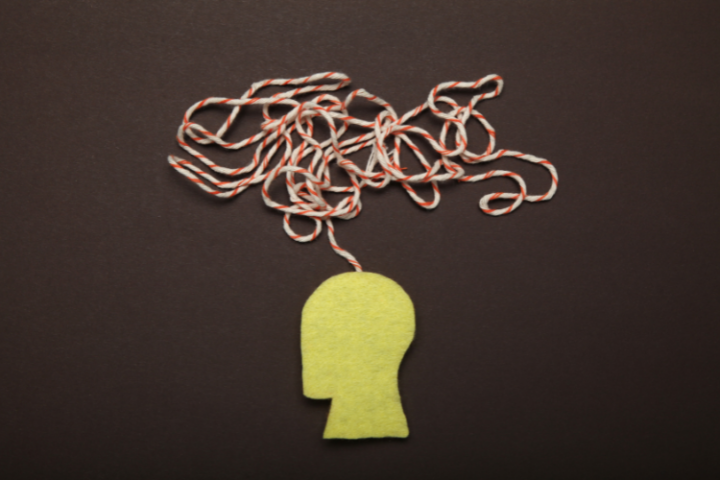Let’s slow this down.
You’re not “too much.” You’re not broken. If your chest tightens when you read about a new illness, if you feel a jolt of panic at the mention of a symptom, if you’ve been Googling for hours and still don’t feel calm… that makes so much sense.
Because health anxiety isn’t a flaw in your thinking.
It’s your nervous system trying to protect you—loudly.
What Is Health Anxiety—Really?
Health anxiety, sometimes called illness anxiety disorder, is often misunderstood. It’s not “hypochondria,” and it’s not about craving attention. It’s the felt experience of your body scanning for danger—and sounding an internal alarm—before your conscious brain can weigh in.
💡 Your nervous system is sensing threat, even if your mind knows you’re okay.
When you live with health anxiety, you’re not just dealing with worry—you’re managing a full-body survival response. That’s because this isn’t logic—it’s survival physiology.
It’s Not About the Symptom—It’s About What the Symptom Means
A tickle in your throat doesn’t just feel like a cold. It feels like:
What if this is serious? What if I missed something? What if no one catches it in time?
For someone with health anxiety, a benign sensation can quickly spiral into catastrophic predictions. That’s not melodrama—it’s your nervous system predicting pain and trying to control the future.
🧠 In neuroscience terms, this is called interoceptive magnification—your brain interprets internal body cues as signs of danger based on past learning and trauma.
🔗 Read more on the science of health anxiety from the Anxiety and Depression Association of America.
What Might This Be Protecting You From?
Let’s pause here together.
What if this relentless checking, Googling, scanning… isn’t just about fear of illness—but about fear of helplessness?
🔍 Health anxiety often shows up in people who’ve lived through:
-
Medical trauma (yours or a loved one’s)
-
Early loss or unpredictable environments
-
Caregivers who were either overly alarmed or dismissive
In those cases, your body learned that vigilance = survival.
Now, when the stakes feel high, your protector parts take the wheel—desperate to regain a sense of control. But here’s the truth: Control isn’t the same as safety.
Why Reassurance Never Really Works (And What Does Instead)
Ever find yourself googling symptoms at 2 am, feeling a moment of calm—only to spiral again five minutes later?
That’s because reassurance is like sugar for the anxious brain—a temporary hit but never lasting nourishment.
The real shift happens when you build capacity to sit with uncertainty. (Yeah, I know—that sounds horrifying. But stay with me.)
🛠 Instead of “Is this symptom dangerous?” try:
-
What part of me is scared right now?
-
What am I hoping this search will give me?
-
Where do I feel this alarm in my body?
These questions don’t dismiss your fear—they witness it. And that’s where healing begins.
🔗 Learn how uncertainty fuels anxiety here.
Your Protector Is a Bodyguard Who Doesn’t Realize the Threat Has Passed
Imagine this:
You have a bodyguard. He’s strong, loyal, and loves you. But he’s jumpy—constantly scanning the crowd, convinced every cough or muscle twitch is an assassin.
He’s not bad. He’s just stuck in 2003 when something really scary did happen.
That’s your protector part. Your health anxiety is trying to keep you alive, even if it’s wearing you out.
What if we could thank that part… and gently let it know we’re building new tools now?
3 Gentle Tools to Anchor When the Spiral Starts
1. Orienting to Safety
Look around the room. Find five things that are neutral or pleasant. Say them out loud. This grounds your nervous system in the here and now.
🧠 Why it works: Your brain can’t be fully in danger mode if it’s tracking beauty.
2. Naming the Part, Not the Person
Instead of “I’m anxious,” try:
“A part of me is feeling alarmed.”
This creates distance and makes space for compassion.
3. The Body Reassures What the Mind Can’t
Try this:
-
Place one hand on your chest and one on your belly.
-
Breathe into both.
-
Say: “I’m allowed to not know. And I’m still safe.”
It’s not about tricking your brain. It’s about speaking the language your body understands: slowness, contact, warmth.
To learn more about how the body and mind are connected, check this out.
What Healing Might Look Like (Spoiler: It’s Not Perfection)
Healing doesn’t mean never Googling again. It means:
-
You notice when the spiral starts.
-
You pause before jumping into action.
-
You offer kindness instead of criticism.
“You get to be scared and safe.”
You get to bring the alarm system into present time.
Final Thought: What If You’re Not Broken—Just Wired for Safety?
This pattern isn’t serving you anymore. But it did serve a younger part of you, once.
What if, instead of silencing your fears, you invited them to sit beside you?
And what if your job now isn’t to convince yourself you’re healthy but to remind yourself that you’re resilient, no matter what arises?
You’re not asking for certainty. You’re asking for safety.
And that? That’s a deeply human thing.
💬 Want to go deeper?
If health anxiety feels like it’s running your life, you’re not alone—and you don’t have to untangle this alone. Working with a therapist trained in somatic or parts-based approaches can help rewire the roots, not just the symptoms.
If you need more support, I’d love to talk. Schedule a free 30-minute consultation with me.
You might also like How the Nervous System Affects Your Health.











